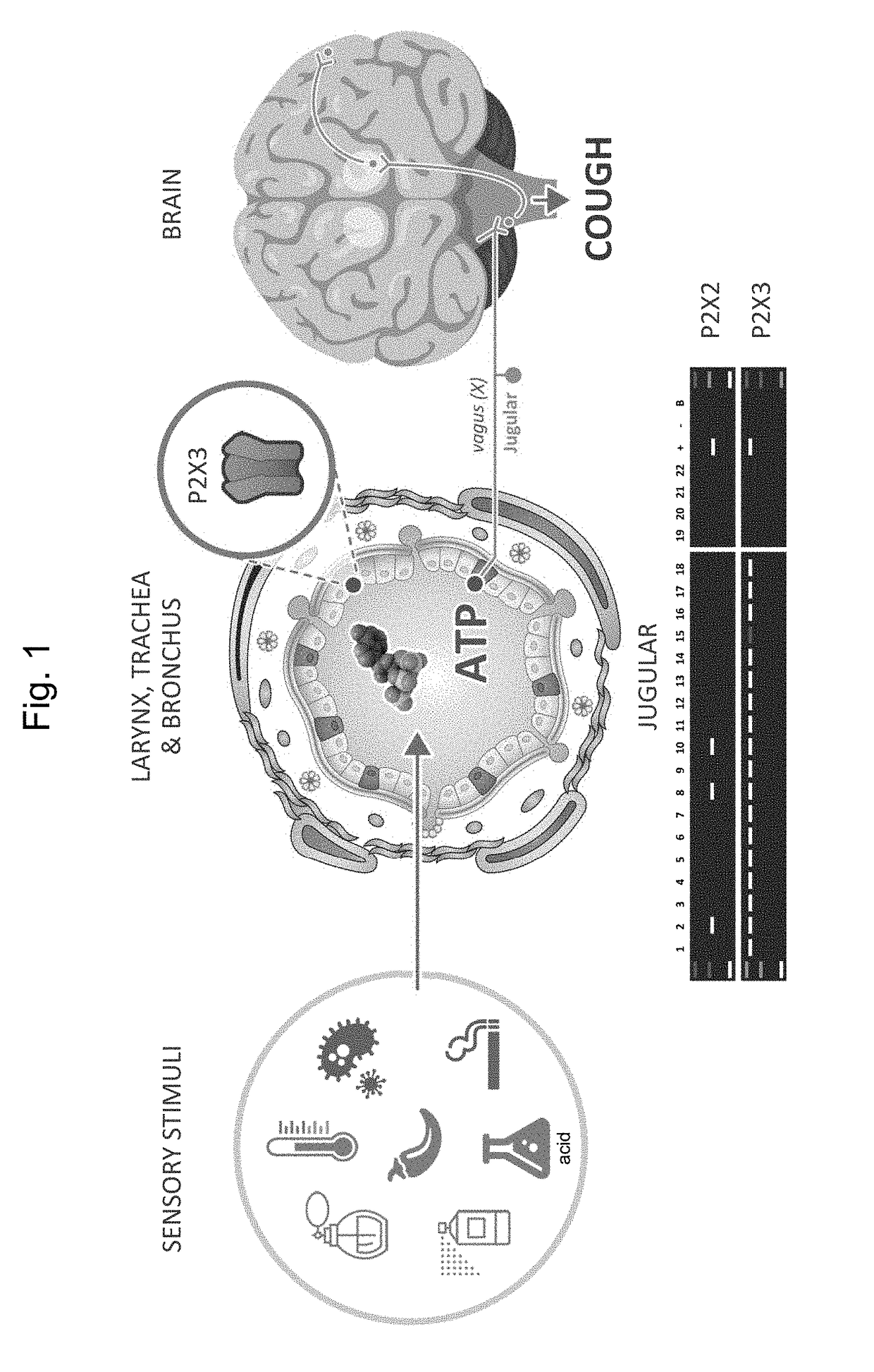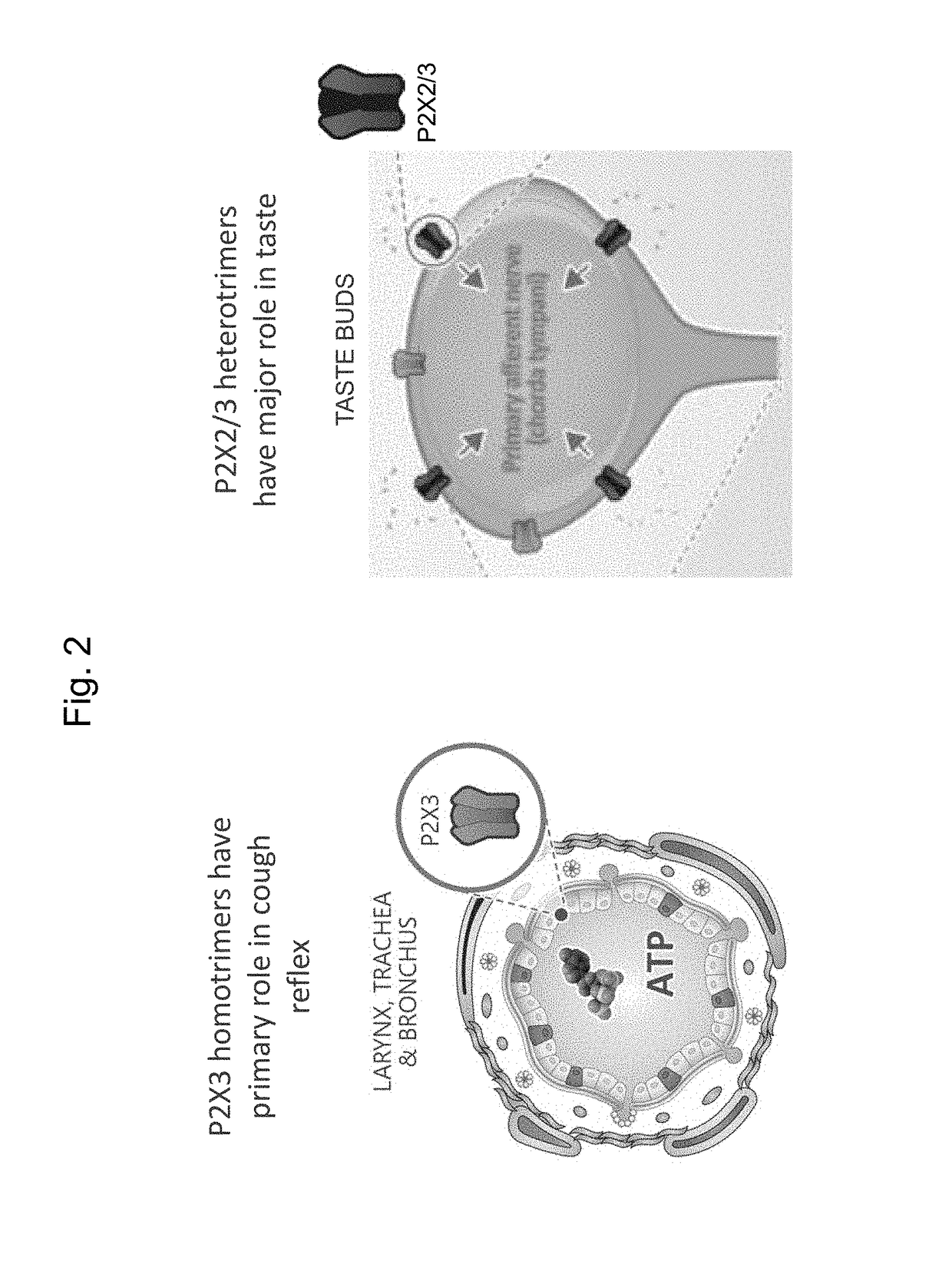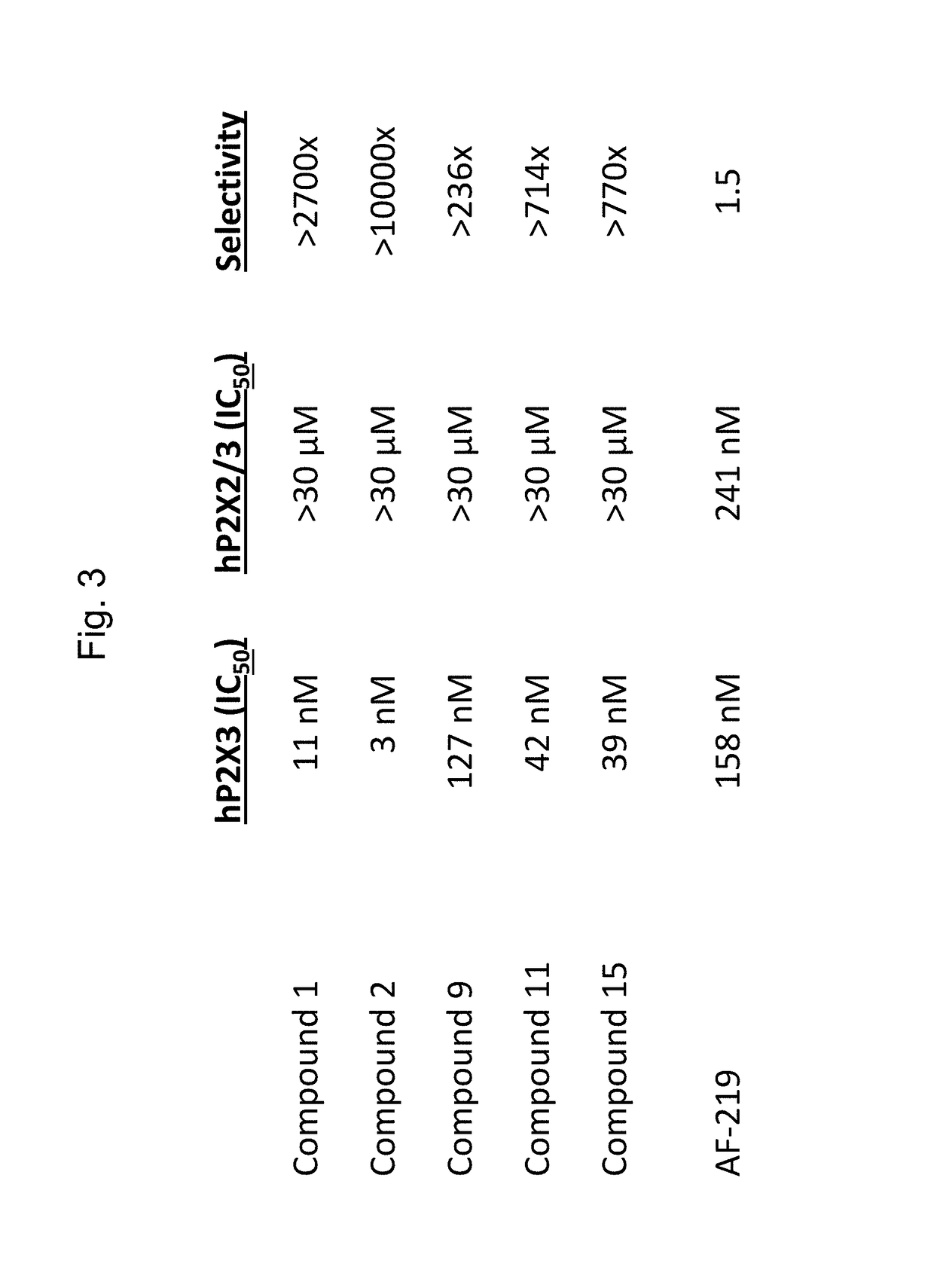Selective P2X3 modulators
a p2x3 modulator and p2x3 technology, applied in the field of selective p2x3 modulators, can solve the problems of significant adverse social, psychosocial and physical effects on quality of life, large number of unexplained chronic cough patients, and portion of patients with an underlying condition, so as to avoid loss of taste response, the effect of avoiding loss of taste respons
- Summary
- Abstract
- Description
- Claims
- Application Information
AI Technical Summary
Benefits of technology
Problems solved by technology
Method used
Image
Examples
example 1
nd Selectivity for Human P2X3 and P2X2 / 3 Receptors
[0146]The ability of the compounds described herein and Gefapixant (also known as AF-219) to act as an antagonist of the P2X3 and P2X2 / P2X3 channel (encoded by the human P2RX2 and P2RX3 genes, stably expressed in HEK293 cells) was evaluated with a Fluo-8 calcium kit. Compounds 1, 2, 9, 11, 15, and AF-219 were evaluated at twelve concentrations.
[0147]For the antagonist effect assessment, the cells were pre-incubated with Compounds 1, 2, 9, 11, 15, and AF-219 for 20 minutes, then stimulated with the P2X3 and P2X2 / P2X3 agonist α,β-methyleneATP (meATP) at final concentrations of 3 μM and 30 μM. Four minutes fifty seconds after addition of meATP, ionomycin was added at a final concentration of 5 μM in order to obtain the maximum calcium influx and fluorescence signal possible from the cells. Fluorescence was recorded continuously for 10 minutes, starting 10 seconds prior to the addition of meATP. IC50s obtained using the above methods are...
example 2
g Cough Response Model
[0148]The anti-tussive effect of Compound 1 was compared to that of AF-219 in a guinea pig cough model. Guinea pigs are the most commonly used animal in cough studies for both the investigation of the cough reflex at a fundamental level and for use as an antitussive screen (Mackensie et al., Drug Discovery Today, 2004, 1, 297-302). In the guinea pig, it was shown that exposure to ATP and histamine aerosols increases cough responses to tussive stimuli via P2X3 receptor-mediated mechanisms (Kamei et al., Eur J Pharmacol (2005) 528: 158-161; Kamei et al., Eur J Pharmacol (2006) 547: 160-164).
[0149]Treatments (control, Compound 1 (0.3, 3 and 30 mg / kg) or AF-219 (0.3, 3 or 30 mg / kg)) were administered orally in seven groups of 6 animals 2 hours prior to tussive agent exposure (citric acid and histamine) and the number of coughs were counted for a period of 15 minutes. Both treatments showed comparable dose-dependent reduction in cough frequency as compared to the co...
example 3
se Study in Guinea Pig Cough Response Model
[0150]Using the same guinea pig cough model as described in Example 2, a time course study was conducted to assess the duration of the anti-tussive effect of Compound 1 and AF-219 following the administration of a single oral 30 mg / kg dose. In this study, animals in groups of 6 were exposed to tussive agents (citric acid and histamine) at various times after the administration of the study drugs (2, 4, 6, 8 and 12 hours post-dose for Compound 1; and 2 and 8 hours post-dose for AF-219) and the number of coughs were measured for 15 minutes. The reduction in cough frequency compared to control was shown to be statistically significant at 2, 4 and 6 hours post-dose with Compound 1, and at 2 hours post-dose with AF-219. The anti-tussive effect was no longer significant at 8 hours post-dose for both agents. These results indicate that Compound 1 and AF-219 have comparable duration of effect (FIG. 5).
PUM
| Property | Measurement | Unit |
|---|---|---|
| structure | aaaaa | aaaaa |
| concentration | aaaaa | aaaaa |
| physical properties | aaaaa | aaaaa |
Abstract
Description
Claims
Application Information
 Login to View More
Login to View More - R&D
- Intellectual Property
- Life Sciences
- Materials
- Tech Scout
- Unparalleled Data Quality
- Higher Quality Content
- 60% Fewer Hallucinations
Browse by: Latest US Patents, China's latest patents, Technical Efficacy Thesaurus, Application Domain, Technology Topic, Popular Technical Reports.
© 2025 PatSnap. All rights reserved.Legal|Privacy policy|Modern Slavery Act Transparency Statement|Sitemap|About US| Contact US: help@patsnap.com



